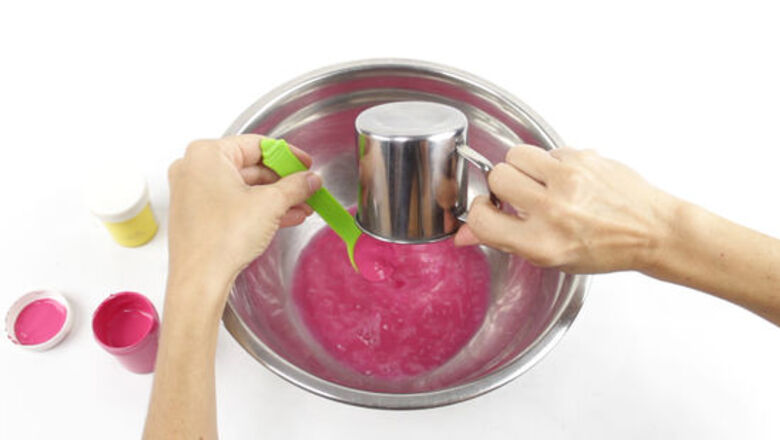
views
Shaping Coffee Filters into Flowers
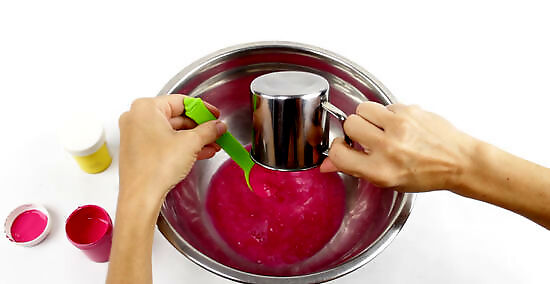
Place coffee filters into dye if you'd like to make colorful flowers. Squirt about 3 tablespoons (44 ml) of acrylic or latex paint into a large pan or bowl and stir in ⁄2 cup (120 ml) of water until they're combined. Then, stir in 2 cups (470 ml) of water and submerge up to 20 round coffee filters of any size. Keep the filters in the dye for 2 to 3 minutes for pale flowers or up to 15 minutes for bold colored flowers.Tip: Have fun mixing different colors of paint to create several flower colors. For example, tint pink with a little yellow to create coral colored flowers. Keep in mind that if you use larger coffee filters, you can make bigger flowers. If you're making white flowers, you can skip dying the coffee filters.
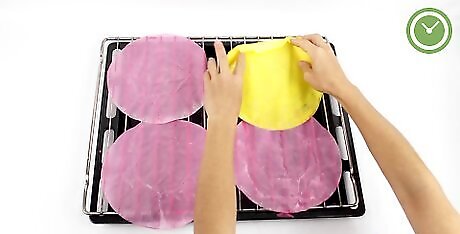
Remove the filters and dry them in a single layer. Once the filters are the color you want, use tongs or your fingers to lift them out of the paint. Let the excess paint drip back into the pan and lay the filters on a wire rack. They'll dry faster in a single layer so don't stack the filters on the rack. The filters should dry within 20 or 30 minutes, depending on your climate.
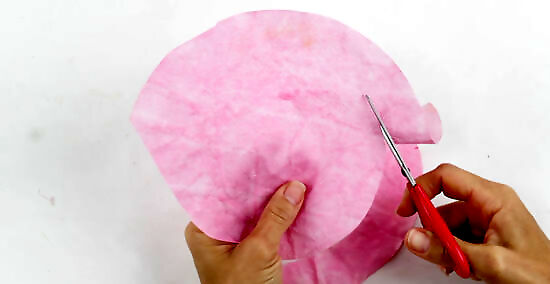
Take a filter and cut it into a spiral. Spread 1 of the dried coffee filters flat and use sharp scissors to make it into a spiral shape. The spiral strip should be about 1 inch (2.5 cm) wide as you cut your way to the center of the filter. Once you've finished cutting the spiral, you'll be able to stretch the ends of the filter to make a long skinny strip.
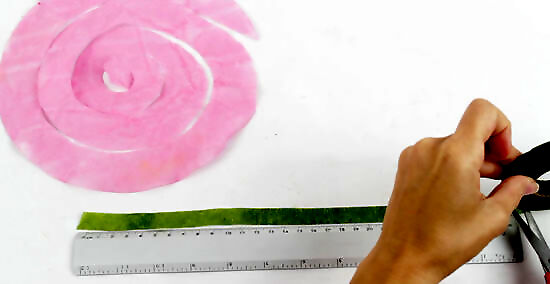
Cut a 12 in (30 cm) piece of tape and stick the center of the spiral on it. Tear off a long piece of masking tape and lay it sticky side up on your work surface. Then, place the end of the filter strip about 1 inch (2.5 cm) from the tape's end. You should use the rounded end of the filter so it will become the middle of your flower. In order to make a simple stem for the flower, consider using green masking tape.
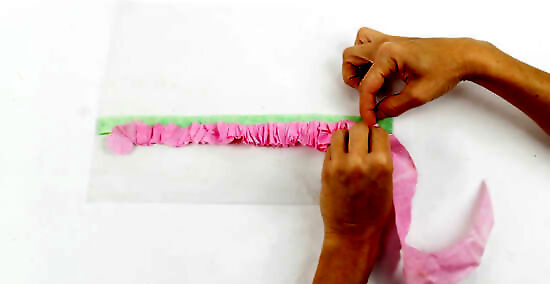
Pleat and gather the filter across the bottom half of the masking tape. To pleat the paper filter, just fold it over onto itself so it ribbons slightly. Press it down onto the bottom half of the tape so it gathers. Then, keep folding as you move down the tape. Leave space along the top of the masking tape so you'll be able to wrap and seal the stem of the flower. You'll now have a ruffled strip of filter across the length of the masking tape.
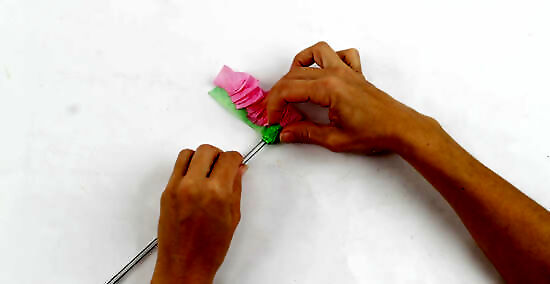
Stick the end of the tape on a straw and wrap the strip around it. Press the tip of a straw on the bottom end of the tape that doesn't have the ruffled filter. Then, wrap the tape around it and keep rolling the straw on the tape until you reach the end of the strip. This will form the ruffled filter flower. If you don't want to use a straw, you can use a thin strip of wire or a plastic stem from old artificial flowers.
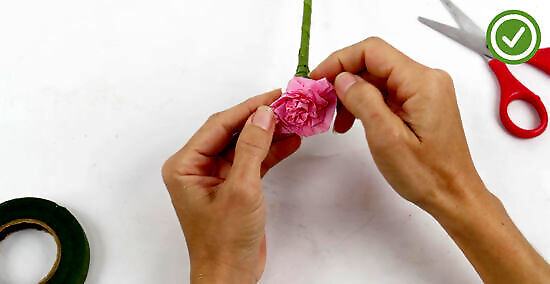
Wrap green tape around the straw to create the stem. Cut off a long piece of green masking tape and stick it near the base of the flower. Then, wrap the tape diagonally as stick it around the entire straw. This will make the flower's stem. You can keep creating flowers with the other dyed filters you made.
Creating Tissue Paper Flowers
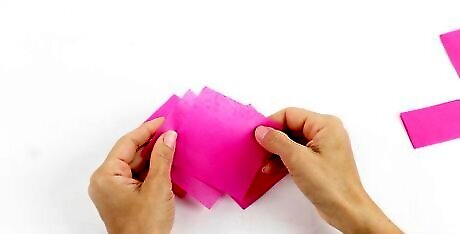
Cut out 10 squares of tissue paper. You can make the squares any size you like, but make them as wide as you'd like the flower to be. For example, you can make the squares 3 by 3 inches (7.6 cm × 7.6 cm) for a medium-sized flower.Tip: For a fun effect, layer different colors of tissue paper to create a multicolored flower. If you'd like to make more than 1 flower, cut 10 squares for each flower you want to create. To save time, you can stack several layers of tissue when you cut the squares.
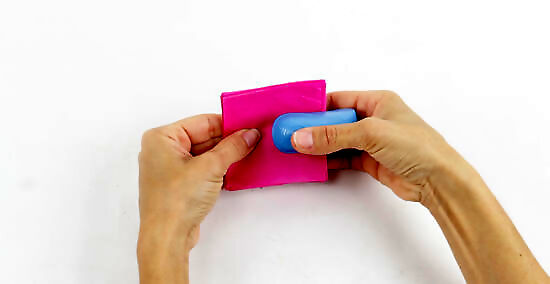
Stack the squares and staple the center. Ensure that the sides of the tissue paper squares are lined up before you staple them together. The layers of tissue paper will become the frilled petals of your flower.
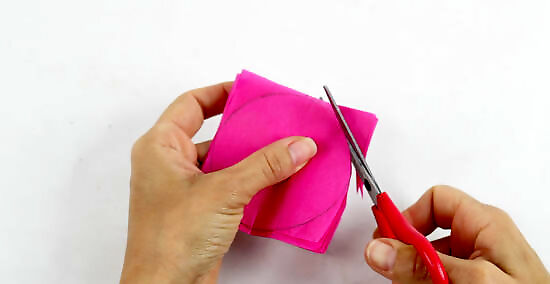
Cut the tissue paper square into a circle. Use a sharp pair of scissors to cut a circle around the stapled center of your tissue paper. Make the circle as wide as you want the flower to be. If you'd like to be precise, you can trace a circle before you begin cutting.
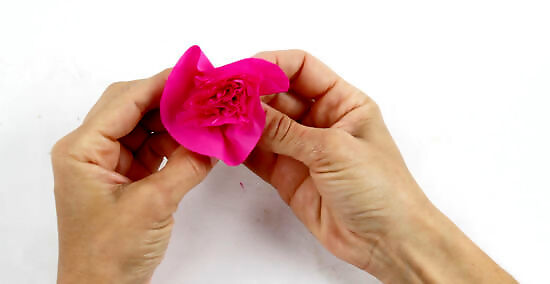
Separate each layer and pinch them up in the center. Peel up 1 layer of tissue paper at a time and scrunch it away from the staple in the middle. You can be firm as you gather each layer because this will make the ruffled texture of the petals. Once you've finished gathering the layers near the center, it will look like a small flower that's starting to open.
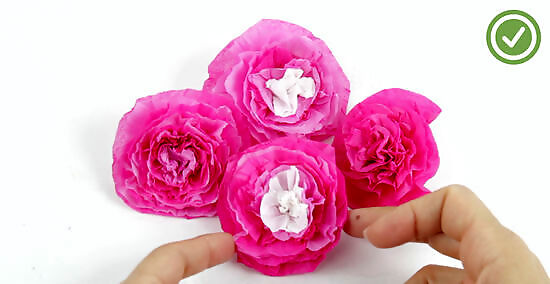
Unfurl the petals to shape your tissue paper flower. Use your thumbs to gently tug the layers of tissue paper apart. Work across the entire flower so it fills out and looks like a rounded blossom. You can keep the bottom layer of tissue paper flat so it's easier to attach your flower to a bouquet or project.
Making Fabric Flowers
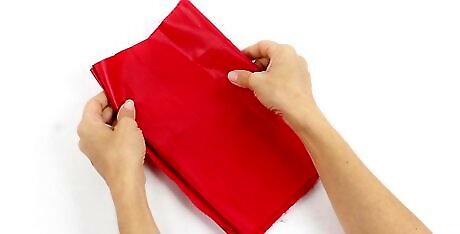
Gather silk or polyester fabric. Choose fabric in your favorite color or use several colors in different hues to make realistic looking flowers. For example, choose peach, coral, and yellow to create a vibrant colored flower. If you're using polyester fabric, consider working with satin, organza, acetate lining, lace, or a combination of these.
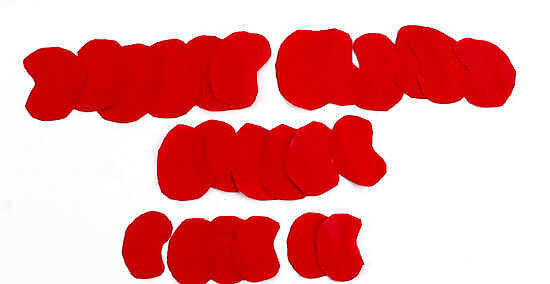
Cut 24 fabric petals in different sizes to make 1 flower. You'll need to cut bean-shaped petals in 4 sizes for your flower. Specifically, cut 6 petals out of silk or polyester for each of these bean-shaped sizes:Tip: To save time, consider making or printing a template of these sizes. Then, you can just lay them on the fabric and cut as many petals as you need. 3 by 1 ⁄4 inches (7.6 cm × 4.4 cm) 3 ⁄2 by 2 inches (8.9 cm × 5.1 cm) 4 ⁄2 by 2 ⁄2 inches (11.4 cm × 6.4 cm) 5 ⁄4 by 3 inches (13.3 cm × 7.6 cm)
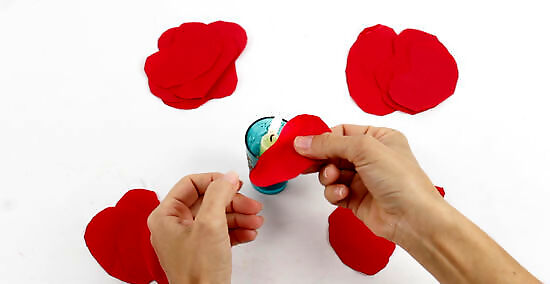
Light a candle and use the flame to sear the edges of each petal. To create realistic looking petals, hold each petal close enough to the candle's flame so the edges curl slightly, but don't burn. Rotate the petal slowly to sear every side. If you're working with thick fabric, you'll need to hold it closer to the flame than if you're working with a delicate fabric. Pay attention to how close you have to put the fabric to the flame and move the fabric closer if it's taking too long.
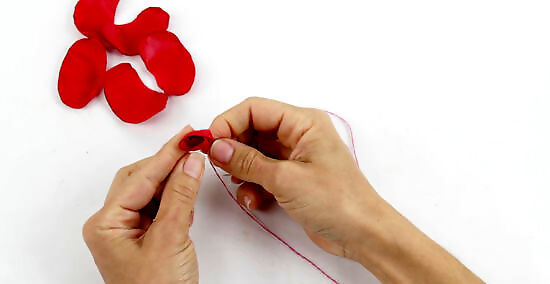
Gather 1 of the smallest petals and stitch the bottom to secure it. Hold the petal horizontally and roll it tightly while you hold the bottom. This will make the center of your flower. Keep the petal in place by double threading a needle and making a few whip stitches across the bottom layers.
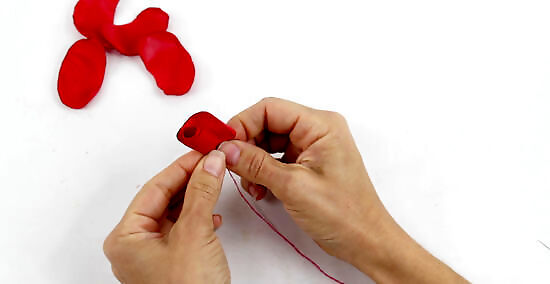
Wrap another small petal around the center petal and stitch the bottom in place. Put 1 more of the smallest petals around the petal that you just stitched. You should keep holding the petals tightly by the base and so your flower can begin to take shape. Remember to whip stitch the bottom again to secure the new petal.
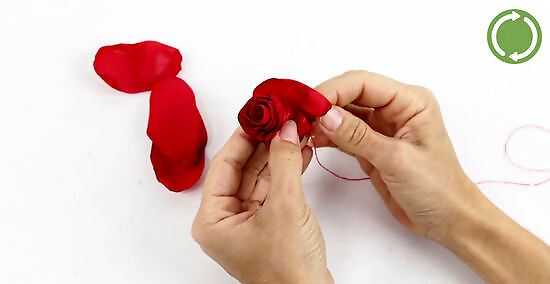
Continue to sew on the petals from smallest to largest. Once you've attached all of the smallest petals, start adding the next smallest size until you've added all of them to the flower. Keep adding the petals so you use the largest petals for the outside of the flower.Tip: To make a realistic flower, overlap the petals as you place them. This will cover the seams and make the petals appear more natural. You should continue to whip stitch the base of each petal so your flower doesn't unravel.
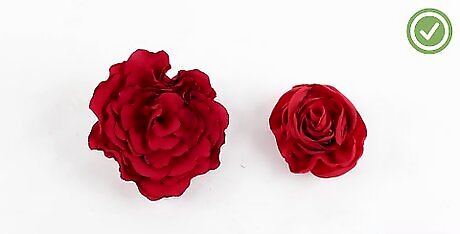
Tie off the thread and unfurl the petals. Tie a knot at the base of your flower and trim the thread. Then, use your fingers to gently pull back the petals at the top of your flower to make them look like they're blossoming. You can now attach the flowers to stems for a bouquet or hot glue them onto bows or wreaths. EXPERT TIP Jeanne Walker Jeanne Walker Florist Jeanne Walker is a Florist and the Owner of Fringe Flower Company, a floral design shop that specializes in weddings, special events, and daily deliveries. Fringe Flower Company, based in Walnut Creek, California, provides customized hand-tied and vase bouquets along with potted plants, succulent gardens, tulip french buckets, and wreaths. Jeanne also conducts floral design workshops and parties throughout the San Francisco Bay Area. Jeanne Walker Jeanne Walker Florist Did You Know? Artificial flowers are great for using on floral crowns. Your head emanates heat, so if you use real flowers, they can droop quickly. Artificial flowers will hold up much better, and they'll still photograph beautifully.













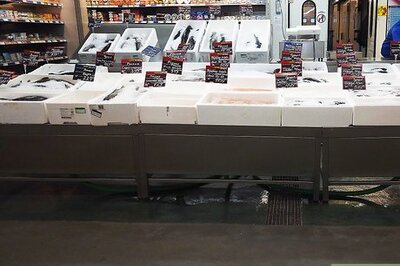



Comments
0 comment